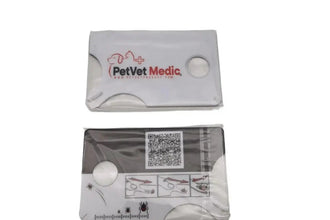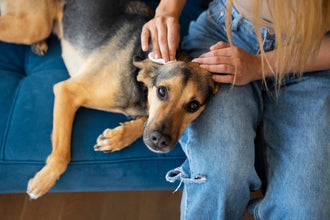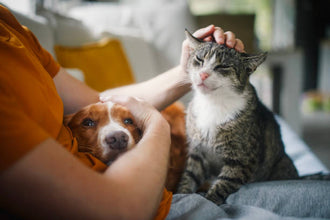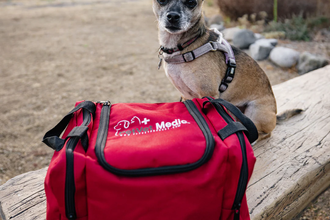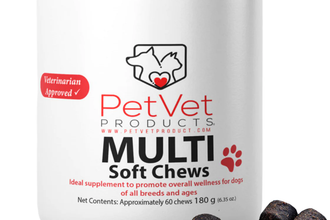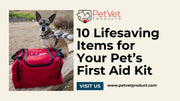
At Pet Vet Products, we know how much your pets mean to you. They’re not just animals—they’re family. That’s why being prepared for emergencies is so important. A well-stocked pet's first aid kit can make all the difference when accidents happen. Whether it’s a minor scrape or something more serious, having the right supplies on hand helps you act fast and keep your pet safe.
In this guide, we’ll walk you through the 10 essential items every pet owner should have in their first aid kit and pet emergency stash. Plus, we’ll share some quick tips on handling common pet medical emergencies.
Why Every Pet Owner Needs a First Aid Kit?
Pets are curious by nature, and sometimes their adventures lead to bumps, cuts, or even more serious injuries. While some issues require a vet’s attention, many minor problems can be treated at home—if you have the right tools. A pet's first aid kit ensures you’re always ready to provide immediate care, reducing pain and preventing complications.
Our first aid kit pet essentials are vet-approved, so you can trust that you’re giving your pet the best possible care in an emergency.
1. Gauze Pads and Bandages

Pets often get minor cuts and scrapes, especially if they love exploring outdoors. Sterile gauze pads are essential for cleaning wounds, while self-adhesive bandages (such as Vet Wrap) protect without sticking to fur. These bandages help wounds heal faster by keeping dirt and bacteria away.
Avoid using regular band-aids, as they can pose a choking hazard if swallowed. Keeping gauze and pet-safe bandages in your first aid kit ensures you're prepared for minor injuries.
2. Antiseptic Wipes or Solution
Proper wound cleaning is crucial to prevent infections and complications. Pet-safe antiseptic wipes or diluted chlorhexidine solution can disinfect wounds without irritating. Hydrogen peroxide and alcohol should be avoided as they can damage healthy tissue and cause discomfort.
Regular cleaning of wounds reduces the risk of infections and speeds up healing. Always check that the antiseptic is specifically designed for pets to ensure safety.
3. Tweezers and Tick Remover

Outdoor adventures can expose pets to ticks, splinters, or other small debris lodged in their fur or paws. Tweezers are useful for removing sharp objects like splinters, while a specialized tick remover ensures the complete extraction of ticks.
Leaving a tick’s head embedded can increase the risk of diseases such as Lyme disease. Regularly checking and removing ticks reduces the chances of infections. Keep these tools in your pet's first aid kit for quick and safe removal.
4. Digital Thermometer
Monitoring your pet’s temperature can help detect early signs of illness or infection. A pet-safe digital thermometer provides accurate readings, with rectal measurements being the most reliable for dogs and cats.
The normal temperature range for pets is between 101°F and 102.5°F, and any reading above this suggests a possible fever. If a fever is detected, immediate veterinary attention is necessary. Keeping a thermometer in your kit helps you act quickly in case of sudden illness.
5. Emergency Blanket
An emergency blanket is vital in cases of shock, hypothermia, or sudden drops in body temperature. These foil blankets help retain body heat and are lightweight, making them easy to carry during outdoor trips or travel. They are especially useful for pets exposed to cold weather for extended periods.
Wrapping your pet in an emergency blanket can prevent further heat loss until professional help is available. Always have one in your pet's first aid kit for unexpected situations.
6. Hydrogen Peroxide (For Inducing Vomiting—Only When Advised)

If your pet ingests a toxic substance, a vet may recommend using hydrogen peroxide to induce vomiting. However, this should only be done under veterinary guidance, as it can be harmful if used incorrectly. A dog chocolate calculator can help determine if medical intervention is necessary.
Never administer hydrogen peroxide without first consulting a professional. In emergencies, always call your vet before attempting to treat poisoning at home.
7. Saline Solution
Saline solution is a safe and effective way to flush out debris from your pet’s eyes or clean minor wounds. Unlike tap water, which may contain irritants or bacteria, saline is gentle and helps prevent infections.
It can be used to rinse out dirt, dust, or allergens from sensitive areas. Keeping saline in your first aid kit ensures you have a safe cleaning solution on hand. Regular use of saline helps maintain your pet’s eye and wound health.
8. Muzzle or Soft Cloth
Even the most well-behaved pets can bite when they’re in pain or scared. A soft muzzle or cloth wrap prevents accidental bites while you provide first aid. It’s important to ensure that your pet can still breathe comfortably while wearing the muzzle.
Using a temporary muzzle can help keep both you and your pet safe during emergencies. Always handle your pet gently and with care when they are injured.
9. Pet First Aid Guide

A pet first aid guide provides essential instructions for handling common emergencies. These guides include step-by-step solutions for situations like choking, poisoning, wounds, and seizures.
Many pet first aid kits come with a printed guide, but digital versions or mobile apps are also useful. Having quick access to this information can be lifesaving in critical moments. Always keep a pet first aid guide in your home or travel kit.
10. Your Vet’s Contact Info & Emergency Clinic Numbers
In an emergency, having your vet’s contact information readily available can save valuable time. You should also keep numbers for the nearest 24-hour animal hospital and pet poison control services.
Quick access to emergency contacts allows for faster decision-making and professional advice. Store these numbers in your phone and write them down in your pet's first aid kit. A quick reference for pet medical emergencies ensures you can act swiftly when seconds count, making preparedness crucial.
Bonus Tip: Know When to See a Vet
While a pet's first aid kit helps with minor issues, some emergencies need professional care. Seek immediate vet attention if your pet:
-
Has trouble breathing
-
Is unconscious or seizing
-
Has severe bleeding
-
Shows signs of poisoning (vomiting, tremors, lethargy)
-
Has a bloated abdomen (possible GDV in dogs)
Final Thoughts: Be Prepared, Stay Calm
No one wants to think about their pet getting hurt, but accidents happen. Having a pet's first aid kit ready means you can act quickly and confidently. At Pet Vet Products, we’ve designed our kits with vet-approved essentials so you’re always prepared.
Your Next Step
Check your pet’s first aid supplies today—are you missing anything? Stock up on must-haves at Pet Vet Products and keep your furry friend safe!
Got questions? Drop them in the comments below, and our team (led by Dr. Leah Hill, DVM) will help you out! 🐾





